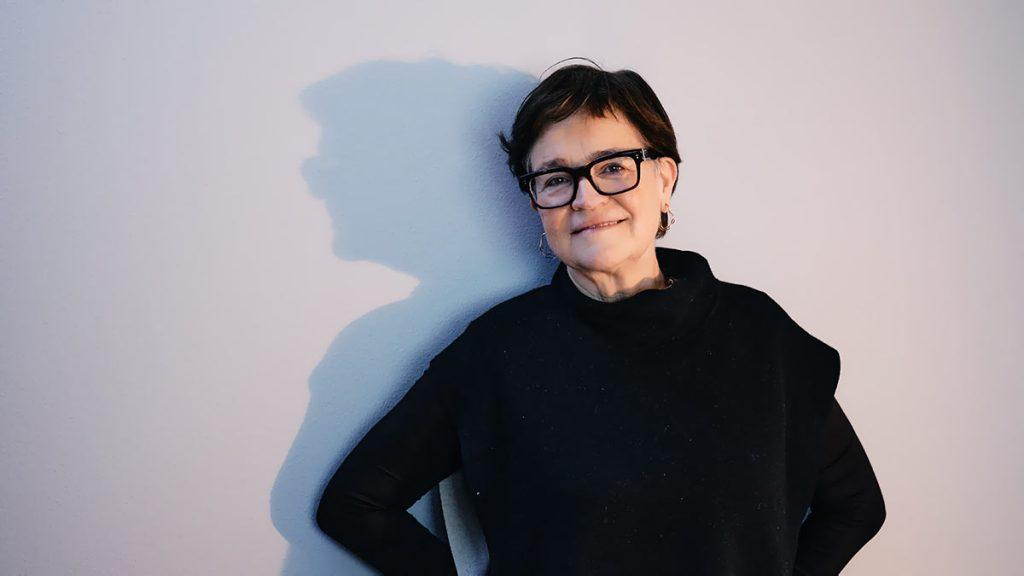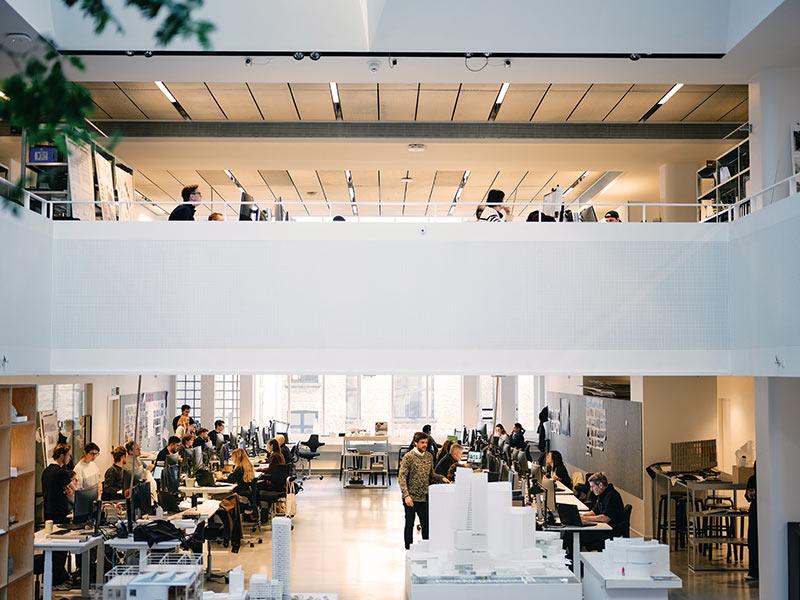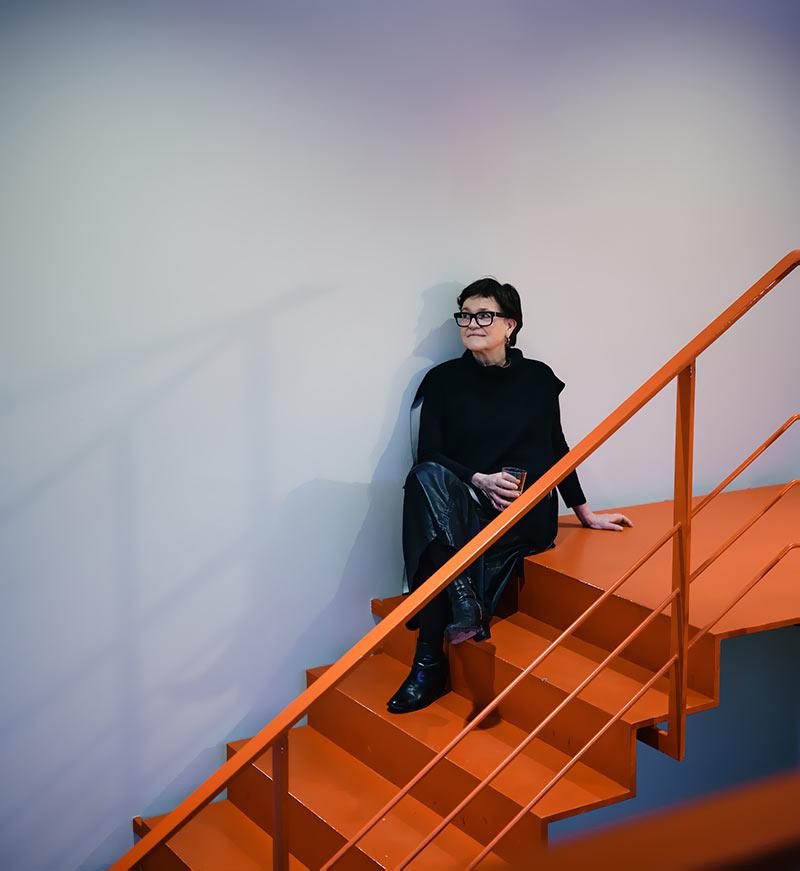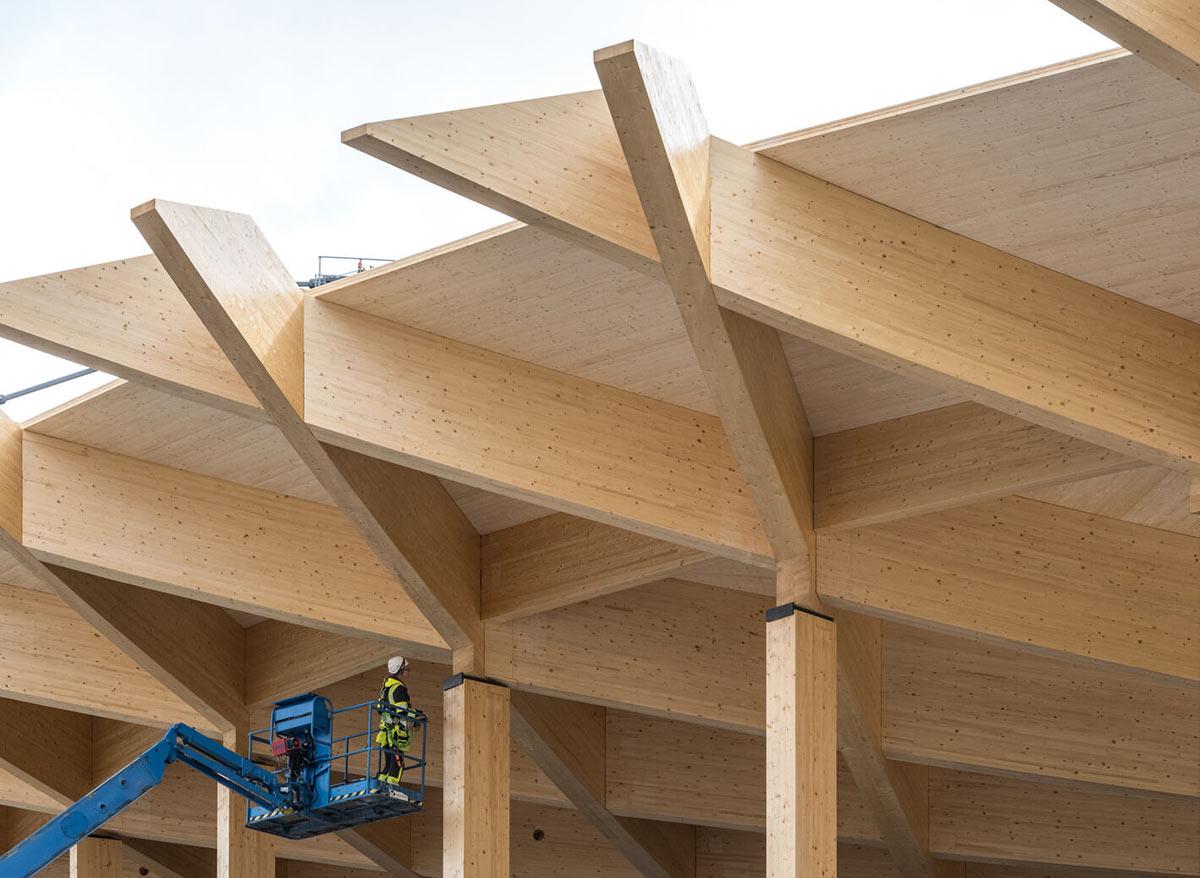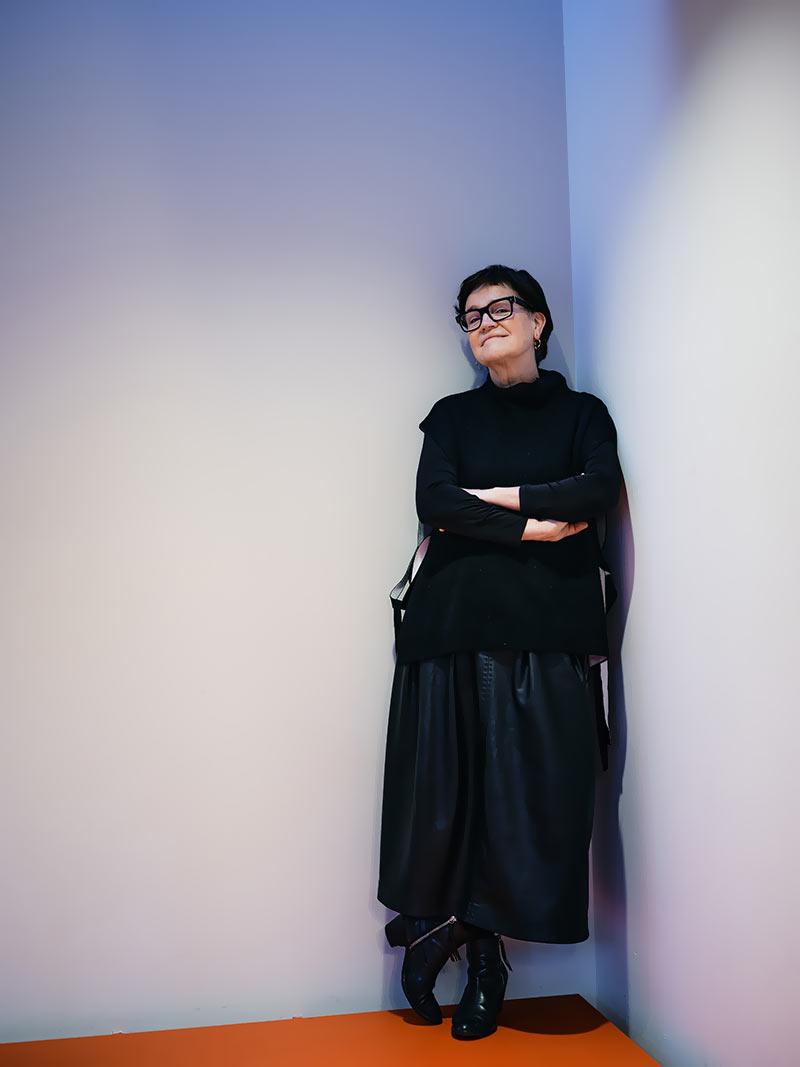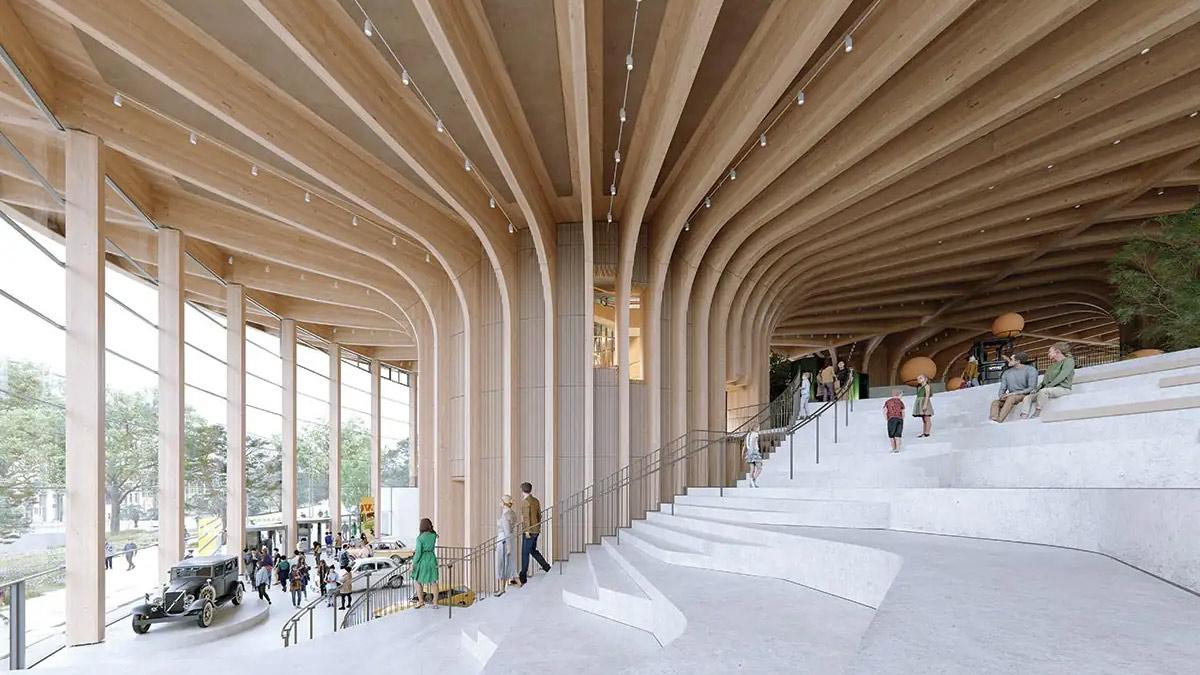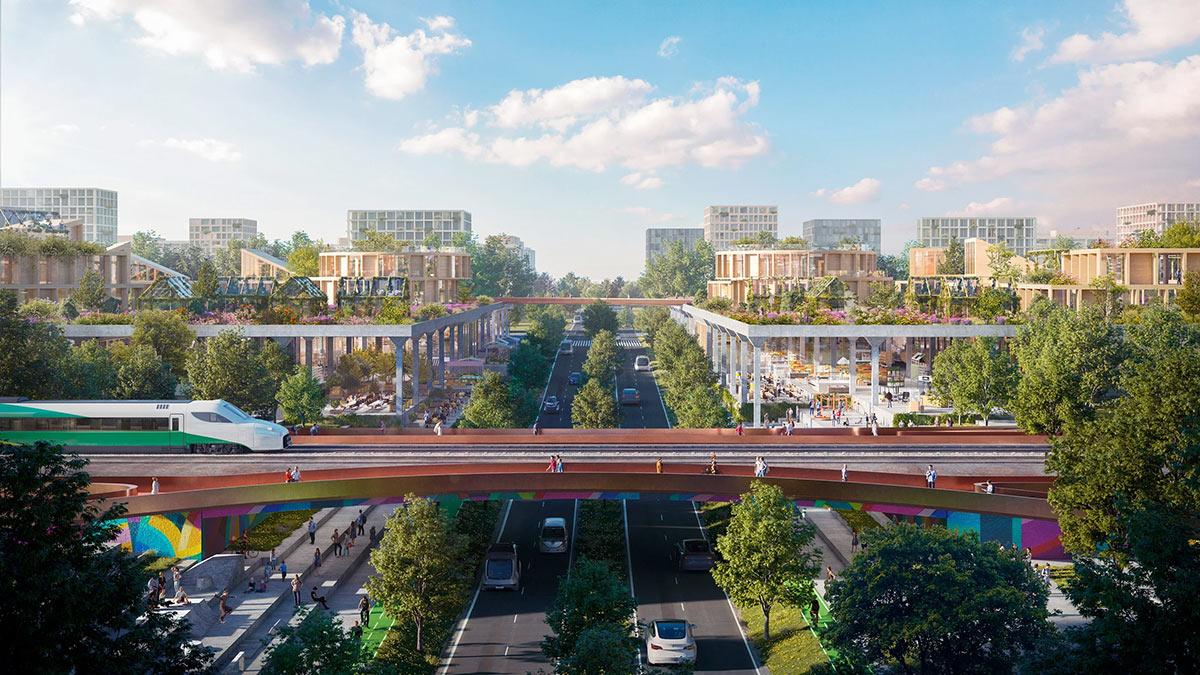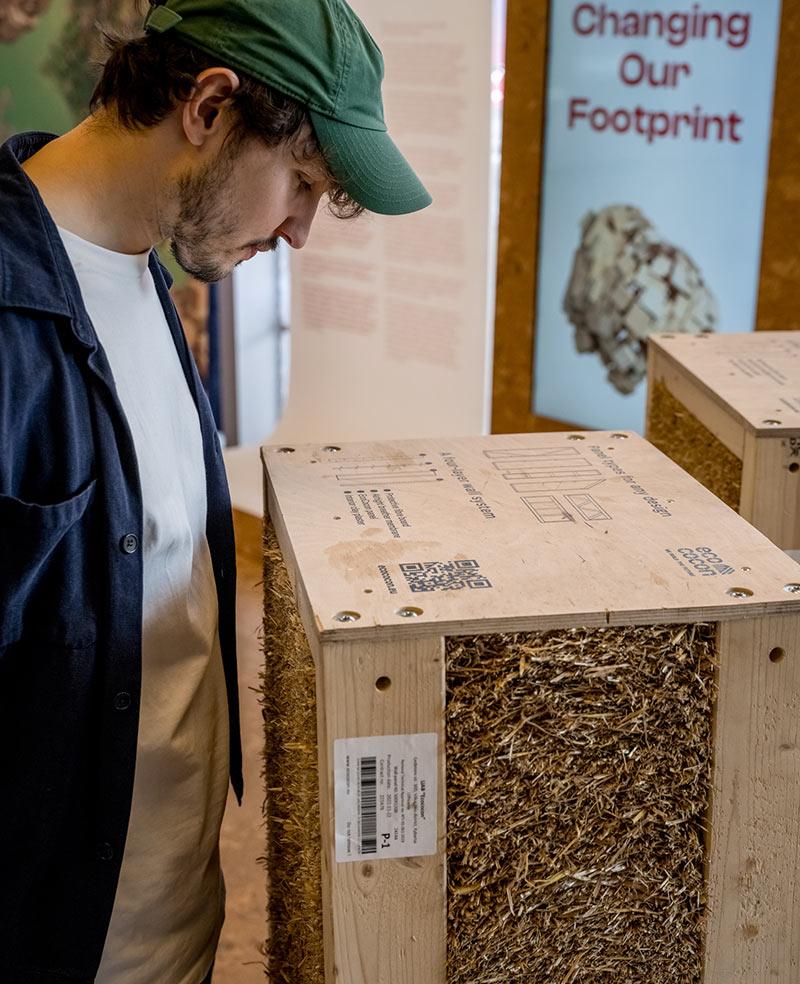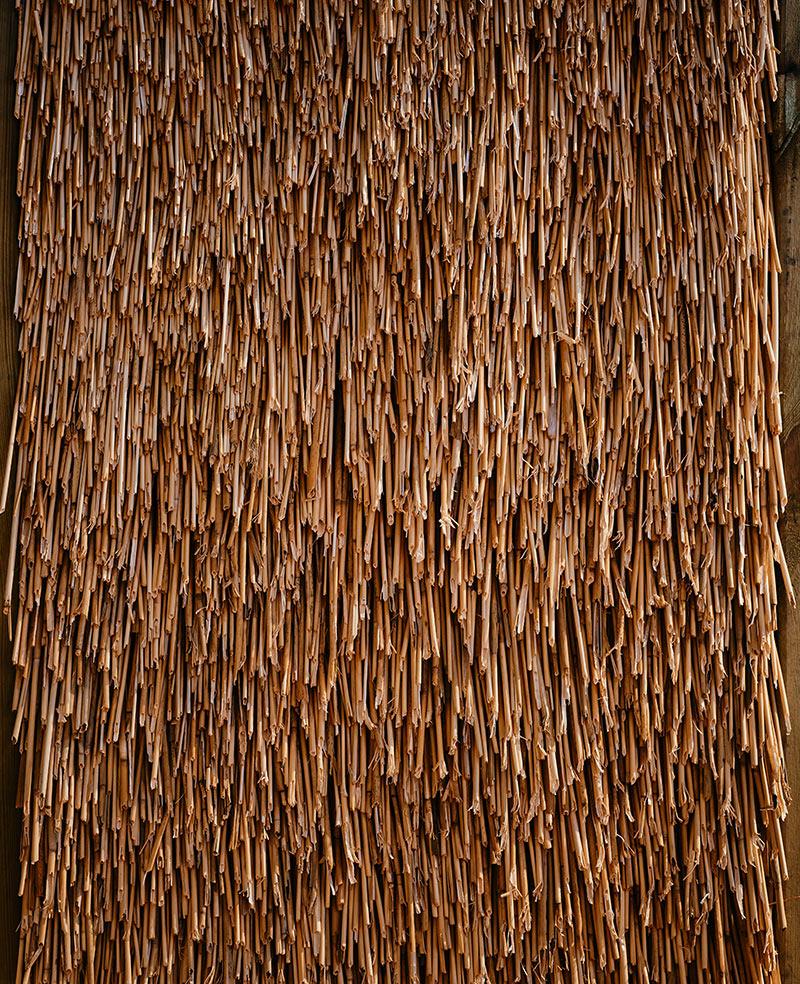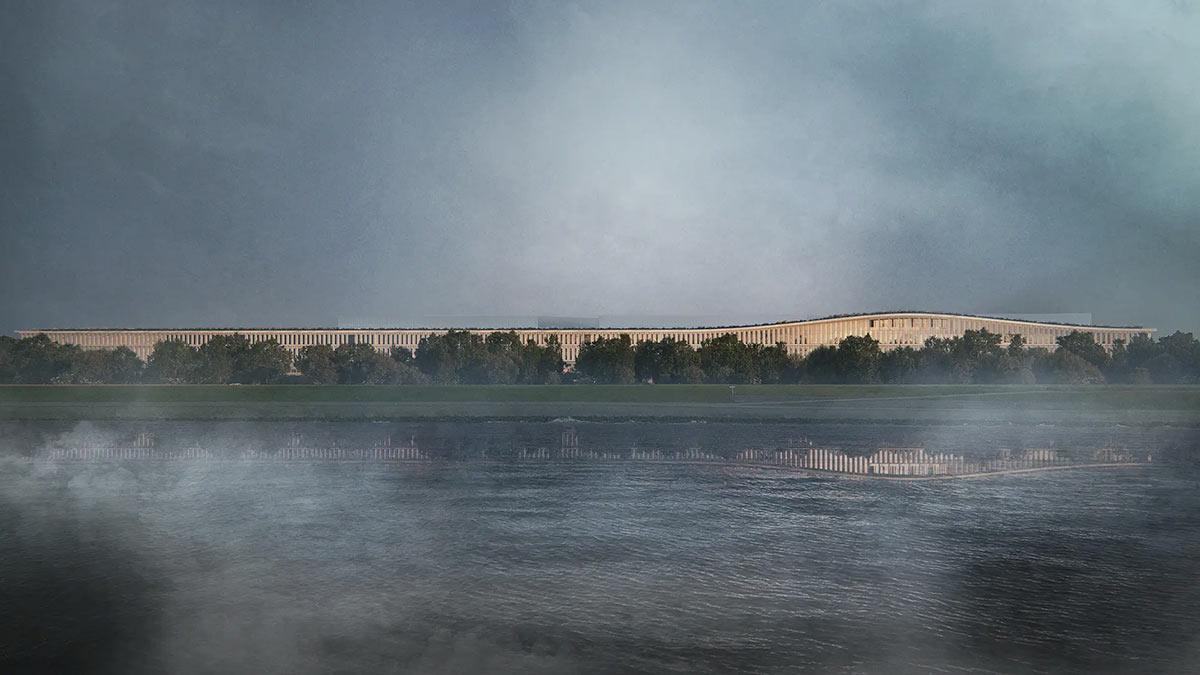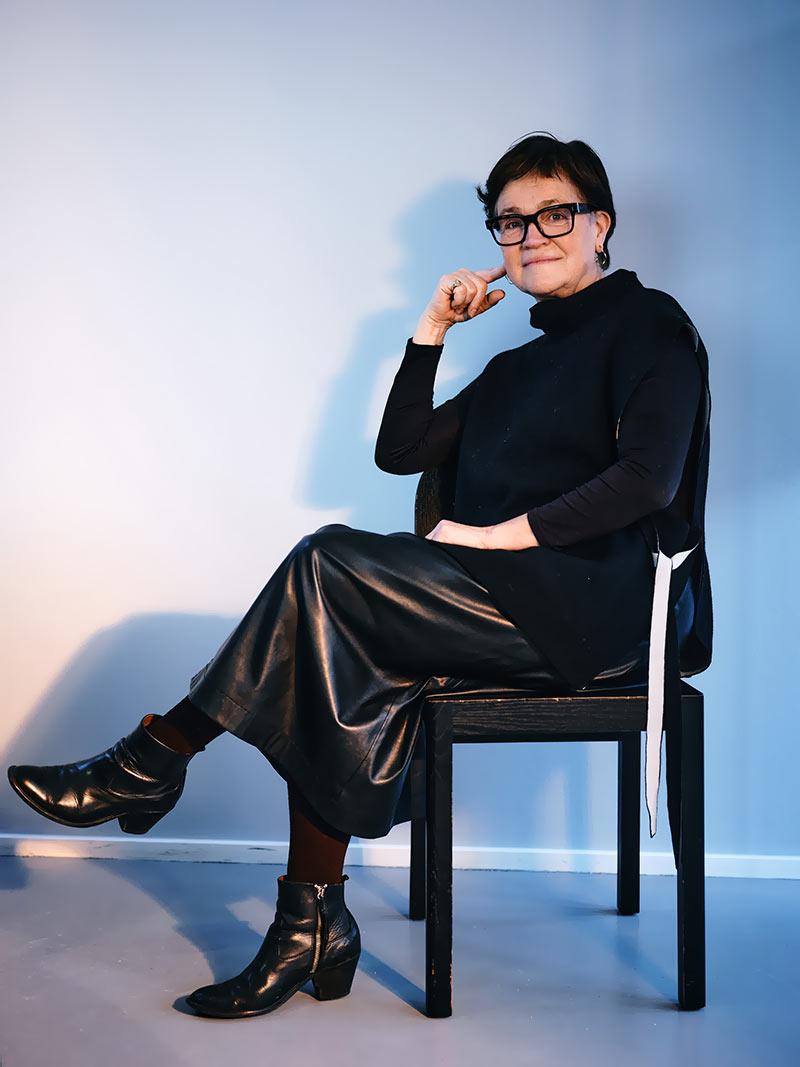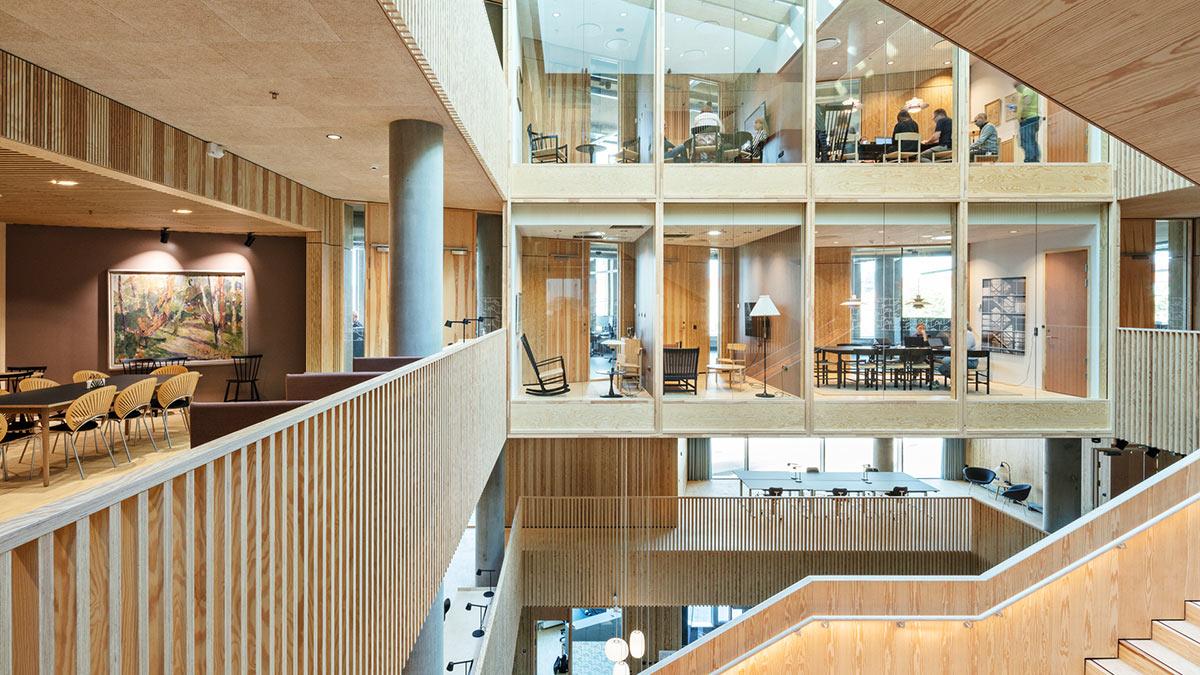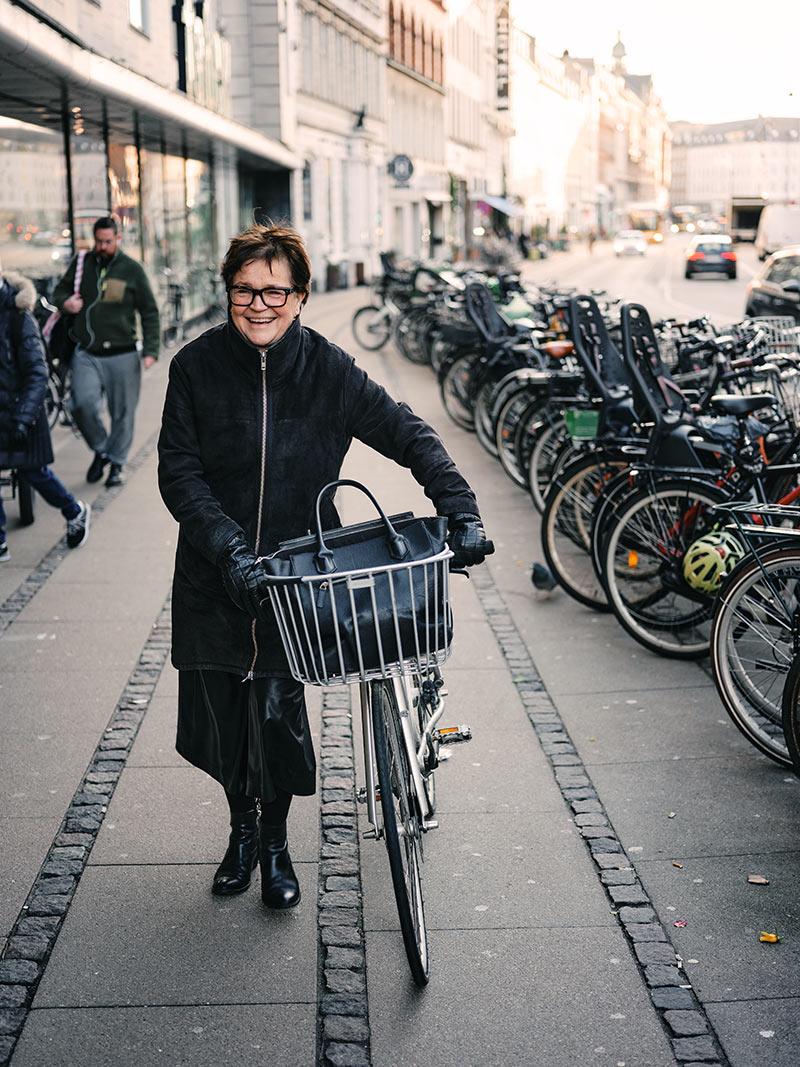The woman behind Henning Larsen
CEO Mette Kynne Frandsen has worked for over 20 years to make Danish architectural firm Henning Larsen what it is today: a pioneer in creating sustainable yet iconic architecture around the world. She gave us an interview before leaving her position.
The company’s offices are located on the top three floors of a mid-century building on Copenhagen’s busy Vesterbrogade shopping street. From the layout of the office alone, it is clear that the cult of architect stardom has run its course. Mette Kynne Frandsen, CEO of Henning Larsen, is sitting at a desk in an open-plan space, directly in front of the atrium parapet. There is no fancy office with an executive chair. Not even her own allocated desk with family photos. Everything she needs for work is right here in the meeting room where the interview takes place: tablet, mobile phone and a glass of coffee.
She recently celebrated 30 years with the company. “I’m not sure if that’s something to be proud of these days,” she jokes. The fact is that, with Frandsen at the helm, the company has become an international byword for a type of architecture that drives forward green innovations and regularly sweeps the board at award ceremonies. Company founder Henning Larsen (1925–2013) – who is primarily known for building The Royal Danish Opera in Copenhagen – personally handed her the reins of the company, allowing her to define its direction even during his lifetime.
As of the beginning of September, at the age of 63, she intends to take things a bit easier and hand over the management of the company. As one of Denmark’s most prominent managers, and as a woman in this position, she is an important female role model in an industry that is still dominated by men.
She spoke to us about biogenic building materials, the paradigm shift in architecture, and the good fortune to live in one of the world’s most progressive cities.
Even though more women have graduated in architecture than men for some time now, they are far less likely to be found in decision-making positions. As one of the most important managers in Denmark, you are living proof to the contrary. What were the decisive prerequisites and turning points in your career that led you there?
I have been with Henning Larsen for 30 years now. That’s quite a long time! For young people today, staying with the same company for 30 years might not be something to aspire to. But I didn’t plan it that way. When I started out, there were around 50 of us in the Copenhagen office. As well as working on competition designs, I started taking on more and more project management tasks. As I had studied architecture, I had a very solid technical background but didn’t know much about management.
So I suggested to Henning Larsen that I study for an MBA for two years and he welcomed the idea. When I had almost completed it, he came to me and said: “OK, Mette, now that you’ve had the training, you can take over the management of the company.” This unconditional support meant an awful lot to me. It was the basis for my whole development after that.
Were there role models for female managers back then?
To be honest, there weren’t many role models at the time, just over 20 years ago. But Henning Larsen was a role model for me in the way he worked as an architect, especially in the cultural sphere. As he wasn’t all that well versed in finance and personnel management, there was a space in the company that I could fill. On this basis, we developed a great working relationship and were able to set about implementing the changes that were planned for the company.
What changes were these?
At the time, Henning Larsen was approaching old age. This meant that we were planning a generation change and also wanted to get more partners on board. As well as this, we needed to realign our company’s culture, which until then had been shaped solely by Henning. How do you take a company that has been founded by just one very strong personality and steer it towards the future? It was perfectly clear to me that we need both women and men if we want to be successful in the long term. Today, the ratio of women to men in our company is 50:50, including at management level. It’s always important to have the right balance, but I think we have really strong female architects and leaders here at Henning Larsen.
I think we have really strong female architects and leaders here at Henning Larsen.
Mette Kynne Frandsen, CEO of Henning Larsen
What would you consider the greatest successes in your career?
Today, Henning Larsen is an international company with a broad positioning, and is foundation-owned. Rather than just managing international projects from our Copenhagen base, we have set up studios in other regions. We now have offices in New York, Singapore, Berlin, Munich, Oslo and Sydney. That means we are a global organization and a global community. I firmly believe that the diversity that comes from having as many different voices as possible outside Copenhagen as well is enormously important for design. 60% of our revenue today is generated from projects outside Scandinavia. And I am very proud of that.
We took another strategically important step four years ago when we became part of the Ramboll Group, a major engineering and consultancy company. Our shared vision is to create sustainable cities and buildings that answer the global challenges. We made this move because, even though we were active internationally, we were still too small to take on legal or financial experts in all these countries. This means that we are still active in architecture and urban planning under the Henning Larsen brand but, with Ramboll, we have a network that supports us in many areas as well. Here, we also benefit from our foundation model, where profit is invested back in the company. Our Innovation and Sustainability department has increased fivefold during this time, which is something that benefits all projects in many different ways. That really helped us to step up our innovation.
What developments do you envisage for Henning Larsen and architecture in general in the next ten years?
One of our goals is for Henning Larsen to grow as a global community and to become an even stronger partner in sustainability that advises and inspires its clients – regardless of where in the world we are working. Apart from that, we are currently in a transformation period due to the urgent need to address climate change. So in ten years from now, our designs will be very different – you can even see the changes happening now. We are moving away from being a company that used to be mainly interested in new-build projects and towards one that will focus more in future on working with existing buildings. And this really stimulates creativity.
Where exactly can these changes be seen?
A transformation in construction systems is beginning, and the use of biogenic building and insulation materials is starting to take off. Another change is the close collaboration between architects and landscape architects. This not only affects the way we design buildings but also has an impact on urban planning as a whole. In my position, I am seeing a growing awareness among politicians and clients about how important this collaboration is for all of our lives.
We are moving away from being a company that used to be mainly interested in new-build projects and towards one that will focus more in future on working with existing buildings.
Mette Kynne Frandsen, CEO of Henning Larsen
Many European cities were planned by men, which is reflected in their infrastructure, architecture and traffic management. Women, who still do the bulk of care work even today, usually have a different everyday routine than men – a fact that is not factored much into city planning. How does your office approach urban development projects these days?
As architects, it is important for us that city planning should include everyone. We have a research project called “Urban Minded” which considers how the design of urban spaces can contribute to the mental health and well-being of teenage girls. We conducted lots of interviews with young women and girls, asking questions such as: Where do you go at night in the city? How do you use your city? This project allowed us to obtain many very useful findings which can begin to address these issues, envisioning a future that prioritizes the well-being and empowerment of young women in our urban design.
Copenhagen has become a model city when it comes to urban development. It has even given rise to the term “Copenhagenization”.
I think that in Denmark we have found very good solutions and have a lot of expertise in effective urban planning. In Copenhagen, politicians were also instrumental in driving forward the concept of a liveable city. In this way, we were able to inspire others and to put our well-tried solutions into practice in projects outside Denmark. Many cities are currently revising their mobility concepts. Needless to say, this is an enormous investment, but I think we will see a huge transformation in our cities in the next ten years.
I often travel to our global studios and can see the differences in the cities with my own eyes. Last week, I was in New York visiting our team, and I called my two daughters and said: “Do you know how lucky you are as young mothers in Denmark? You can take your children to kindergarten and easily bike to work.” In the US, thanks to differences in urban planning, it can be very difficult for women, and working in the architectural sector is no exception. Of course, we can’t change the whole system there, although I can try to provide as much support as possible for the female architects in our New York office.
Today, you often hear people using the terms “compact city” and “city of short distances” – a concept that feminist city planners were already advocating back in the 1970s. Can you give an example of an urban development project where this was used?
For example, our master plan for Downsview in Toronto is a huge project that is to be implemented over the next 50 years. Instead of planning cities with a business quarter and residential area, we are breaking up the area into local communities and neighbourhoods. Ten years ago, master plans were really about structures and mega-cities but today the focus is much more on people and community. With this project, there was a large-scale community engagement process beforehand, where people were able to get involved directly.
All of this input is reflected in the master plan. The infrastructure is set up to allow people to move about as easily and safely as possible within the neighbourhoods. The way that we work today – working from home to a greater extent – has also influenced urban planning.
What project are you particularly proud of at Henning Larsen?
Things have changed quite a bit in this regard over the years. Ten years ago, we were particularly proud of the iconic buildings like the Opera House. But if you were to go around the office today and ask people that question, you would find they are most proud of the small, innovative projects. For example, Feldballe School, which came about through a cooperation between philanthropic organization Realdania and a start-up that wanted to launch a façade element made of straw and timber. We implemented this project and succeeded in scaling up the biobased construction system. And now a logistics centre in the Netherlands – the largest anywhere in Europe – is going to be built in the same way as the little school in Denmark.
Ten years ago, we were particularly proud of the iconic buildings like the Opera House. Today, it is the small, innovative projects that make us most proud.
Mette Kynne Frandsen, CEO of Henning Larsen
From this project, you can also see what paradigm shift has already taken place. Five or ten years ago, we wouldn’t have dreamed of building logistics centres! But today we see there is a great sphere of influence here, where we can drive forward innovations and change things for the better.
The Danish Architecture Centre recently hosted the Changing Our Footprint exhibition, where visitors could see and even touch a model of this timber and straw construction. How important is open-source thinking in your company?
As we all have the same goal – to have a positive influence on the future of our planet – sharing knowledge is enormously important. We can inspire and learn from one another. Some of our biggest competitors are now our best partners in certain areas. This is a development that I am very happy about. I get lots of calls from colleagues asking: “How did you do that? What were your learnings?” I’m just happy to share. The world is such a big place and the more we learn from each other the better.
But that’s also something that has changed – it wasn’t like that ten or twenty years ago.
Maybe it also has a little to do with the fact that there is a woman at the helm. Of course, we need competition as an incentive, but there are other values that are important too. I would like to see this openness continue at Henning Larsen in the future.
As we all have the same goal – to have a positive influence on the future of our planet – sharing knowledge is enormously important.
Mette Kynne Frandsen, CEO of Henning Larsen
According to a UN report, the building and real estate sector is generating record levels of greenhouse gases, accounting for almost 40% of global carbon dioxide emissions. What responsibility do architects have today?
The sense of responsibility in the industry has increased enormously. Especially among the new generation of young architects who are very idealistic and question lots of things – including whether we should get involved in new-build projects at all. The young generation wants to use architecture to help shape the future of the world in a positive way.
Our economic system needs to break free of the “take-make-waste” principle and be more regenerative. We are creatures of habit and changing processes in our complex, interconnected world calls for time that we don’t have. How could the necessary changes be accelerated?
By setting good examples – and there are plenty of these. We need to step up our communication in this regard. At the same time, we are seeing growing interest in sustainable solutions among our clients because they are required to report on their performance in social and ecological sustainability. Some project briefs that we receive these days call for us to retain and adapt as much of the existing building as possible. That goes beyond saving grey energy, as preserving historical building fabric also endows a sense of identity.
These days, projects shouldn’t be evaluated based on construction costs alone, they should also factor in the carbon footprint, which we work out for each project. And then you can compare both the costs and the emissions of the various options – from new build to circular project.
The climate crisis has shifted the focus back to very old building materials and methods, namely wood, straw and earth. Is technology no longer the be-all and end-all? Or is low-tech the new high-tech?
I think it’s a combination of both. In the past, we poured lots of concrete into buildings to meet the structural requirements – these days, we can use parametric design to optimize the amount of concrete we use. Right now, the price of recycled bricks has escalated because there is a severe shortage. With biobased materials, there is no end of smart innovations and there is also great interest from investors who recognize the potential they offer. I think it will be important to strike a healthy balance between construction materials in future.
To date, there has often seemed to be two separate categories for buildings; they were either sustainable or iconic. Henning Larsen regularly succeeds in combining the two. How do you manage that?
For a start, timber construction is suddenly opening up whole new design opportunities and freedom – exploring these has been enormously inspiring for the architects. On the other hand, you need the latest digital tools for these forms. Without these, projects like World of Volvo would never have been possible. The great success of this project is also due in no small part to the collaboration between our designers, digital experts and the timber construction engineers and producers.
Timber construction is suddenly opening up whole new design opportunities and freedom – exploring these has been enormously inspiring for the architects.
Mette Kynne Frandsen, CEO of Henning Larsen
As it happens, I was visiting the facilities of Austrian company WIEHAG when the huge, curved glulam beams were being produced for World of Volvo. That was really impressive.
When I was training as an architect, visiting construction sites was an important part of the process. How is a building actually constructed? What exactly does a carpenter do? We had a lot of hands-on knowledge. And this knowledge fell by the wayside a little with the rise of digital design. However, the new construction materials are once again arousing the interest of architects in production processes. I think it’s very healthy to have this connection.
Just like the emergence of the “form follows function” principle at the end of the 19th century, we are experiencing a kind of new departure again today. What could be seen as its guiding principle?
I think it’s always good for form to follow function and wouldn’t interfere with that. But the way in which we use the areas and assign functions is something that we will have to take a closer look at in future. How many square metres can each person claim for themselves? How can we ensure that those areas that we don’t need every day can be shared? Those are questions that are always relevant for urban development. For example, you don’t need a guest room in your house if there is a communal guest house in your neighbourhood. Lots of new housing models are currently being built based on co-housing. I think we will need to optimize our current high square metre consumption.
If you were choosing a field of study today, would you opt for architecture again?
I think about this sometimes. Yes, I would study architecture again. I think architecture has never been as exciting as it is right now.
Interview: Gertraud Gerst
Photos: Philipp Horak, Laurą Stamer, Rasmus Hjortshoj
Visualizations: Henning Larsen
